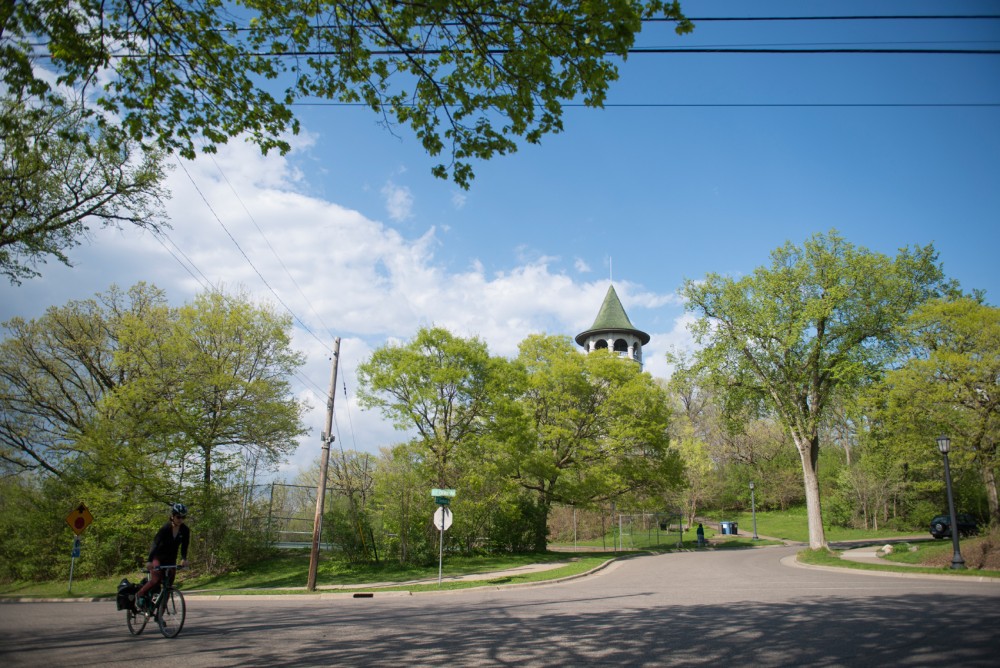As the light rail brings in fresh traffic and more students move in to new constructed apartments, organizations like the Prospect Park Association are working to engage with a widening demographic.
Previously titled the Prospect Park East River Road Improvement Association, PPA’s name change last year was the first in a multi-step process that aims to unify the area and connect more with students.
Vince Netz, director of PPA, said Minneapolis brought forth new requirements in 2014 pushing neighborhoods to encourage more participation
from residents.
“Every creed and color has a right to participate in and have a voice — equal voice — in the affairs of the neighborhood,” Netz said. “The city started to really push us, which is good.”
The city’s push caused PPA to launch an extensive bylaw overhaul. Members reviewed bylaws and rewrote them in clearer language to be more inclusive.
Netz said PPA contacted the Marcy Holmes Neighborhood Association, the Southeast Como Improvement Association and the West Bank Community Coalition for help navigating the changes.
The team also looked to residents and recent legislation during the process. The group met nine times, hosted six discussion sessions for residents and presented a final rewrite to the PPA board last month. The board will make its final vote on the changes on May 23.
The Prospect Park bylaws have been largely unchanged since 1982, said PPA’s Vice President Richard Adams, with the exception of a 2008 amendment allowing students and business owners to join the association.
Adams said he doubts PPA impacts the University students who make up more than half of Prospect Park’s residents. To combat this, the new changes move board elections to September instead of May when many students begin to leave for the summer months.
“If there are students who really want to be involved, they will be involved for an academic year as opposed to a month,” Adams said. “The academic calendar and our business calendar are now aligned.”
Netz said PPA also wants to emulate other neighborhoods by designating a board seat for students specifically.
“It is entirely possible that all the people who move in across University over here are going to have no interest whatsoever in what’s going on in our neighborhood,” Adams said. “But we needed a structure that could bring a vast number of new people with new ideas and sets of values in an orderly way, and we certainly did not have that.”
Adams said regardless of whether PPA or students themselves are responsible for the lack of involvement, no students showed up to the six bylaw discussion sessions.
“It never even occurred to me that students would be interested in forming the bylaws,” he said.
Cody Olson, University alum and director of SECIA, got involved in his organization while he was still in school.
“My connection came through a service learning portion of [a] class,” Olson said. “I just kind of stayed around for a while.”
He said he recently hired three student interns he found through a University career fair in February.
The WBCC has also made space for its younger population, said Executive Director Mohamed Mohamed. Five students currently hold board seats, and the coalition aims to be as flexible to their schedules as possible, Mohamed said.
“Last year, we started a youth and young adult committee,” he said. “We’re getting youth and young people’s perspectives into our organization.”
University kinesiology sophomore Burlyn Barnes lives in the University Village apartments in Prospect Park.
Barnes said he and roommates chose the apartment for its price and campus proximity, not its local leaders.
Barnes said he wouldn’t go out of his way to get involved, but he would give input on bylaws and other decisions if the PPA reached out to him.
“If you asked me, I probably couldn’t tell you the name of the neighborhood I lived in,” he said. “I would say that since they have such a large percentage of students, they should obviously get the input of students.”








